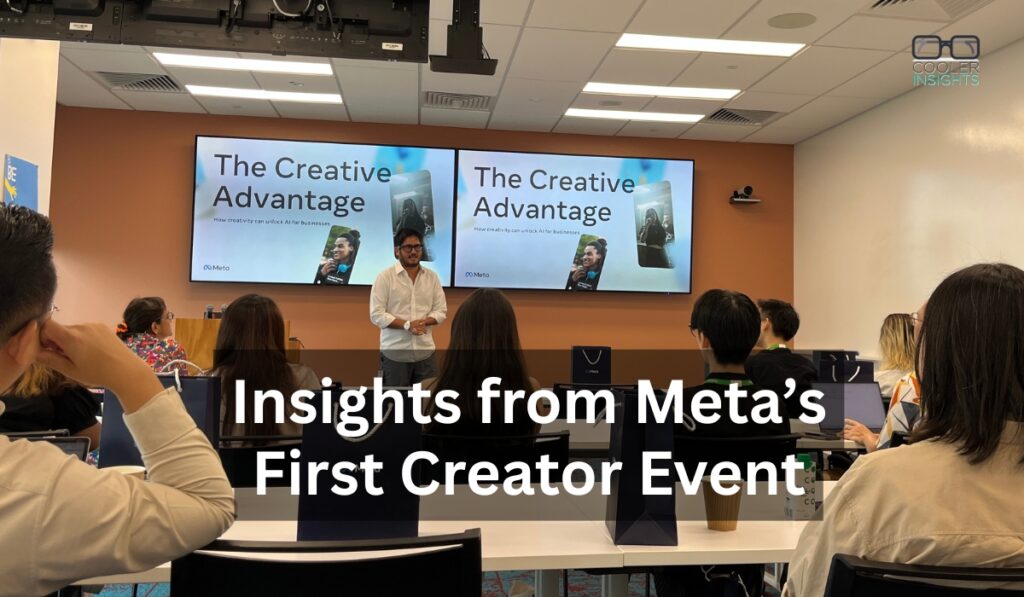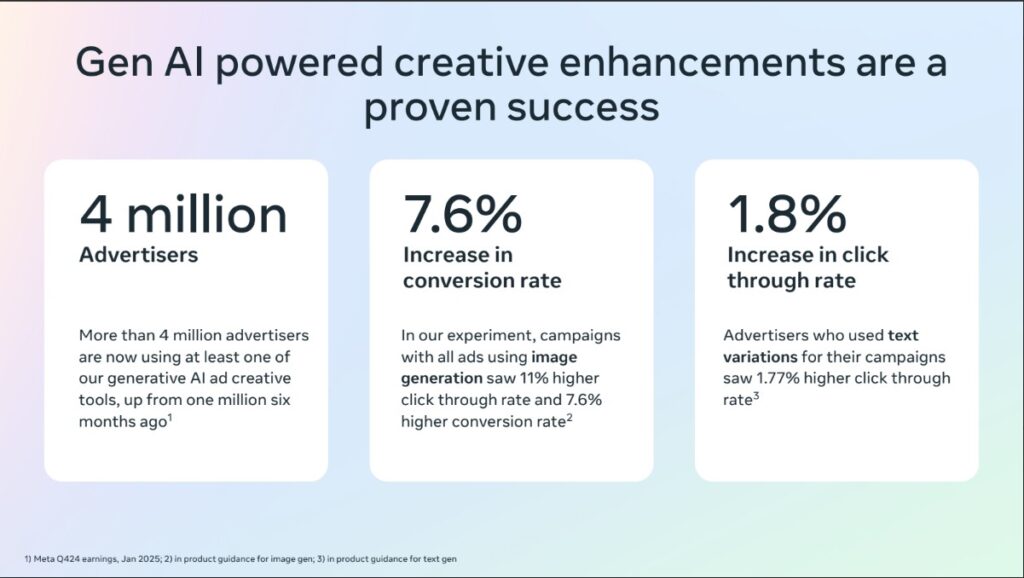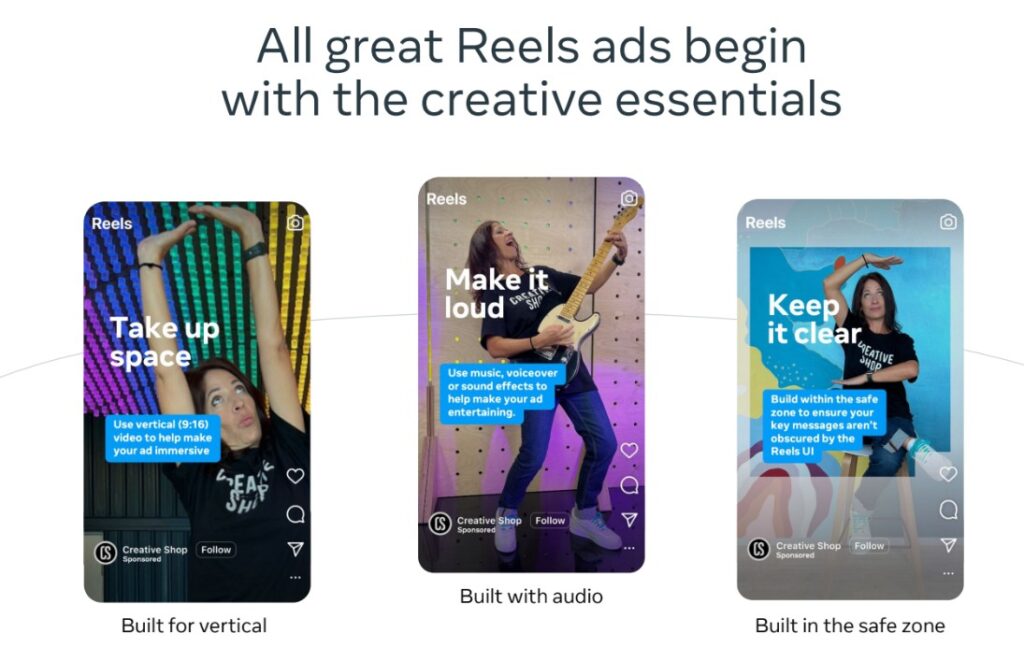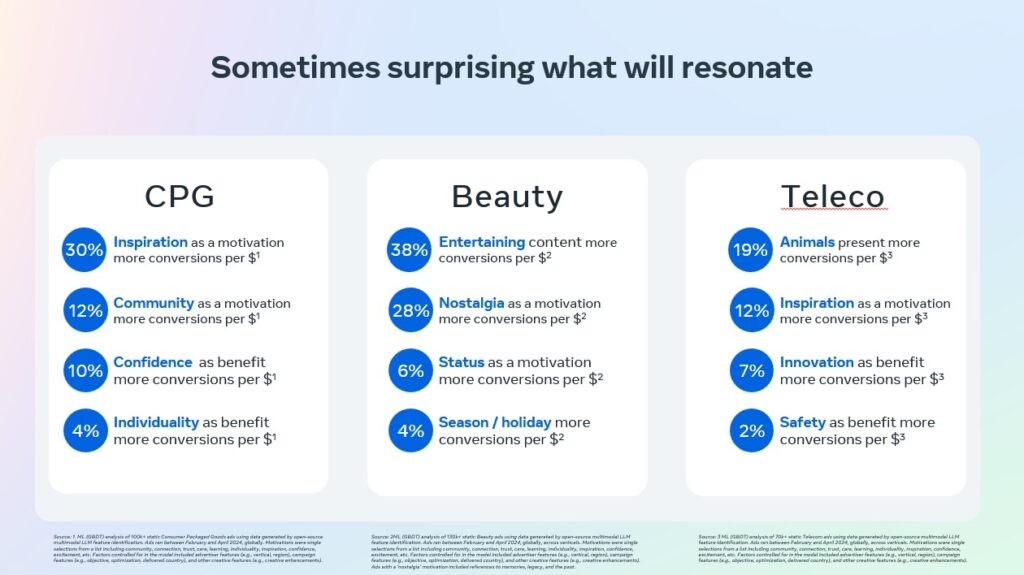
Last week, I was invited to attend Meta’s first-ever creator-focused insider briefing in Singapore, held at their Marina One offices. The event is part of a new initiative called the Meta Megaphone Program—a global program for business-focused creators like me.
It offers early access to advertising tools, the opportunity to participate in research and press events, and additional support to grow visibility through Meta’s own platforms.
As a digital marketer whose team has managed lots of campaigns across Facebook and Instagram, I’ve spent the better part of the last decade living inside Meta Ads Manager.
From doubling leads for preschools to helping investment platforms hit record sign-ups, we’ve tested every creative variation, audience strategy, and funnel structure you can think of. My clients have seen 10X improvements in cost per result, 250% gains in organic traffic, and significant growth in conversions—even during the fearsome COVID period.
So when Meta launched their first creator-focused insider briefing in Singapore, I paid close attention.
This was the first time the program has been rolled out locally, and the session covered a range of product updates, research findings, and creative best practices. What follows is a summary of the main takeaways.
Streamline Creative Creative Workflows with Advantage+
One of the key themes of the briefing was simplification. Thanks to Meta’s latest updates to the Advantage+ creative workflow, friction will now be removed for advertisers.
A new media picker in Ads Manager now lets you manage creative elements in one flow—allowing better previews, control over AI enhancements, and earlier text input to improve image overlay relevance.
So yes, you can now optimise image generation based on your text input, gain better previews, and opt into automation features more easily.
This is a big leap in usability, especially for marketers managing multiple campaigns on lean timelines. Like yours truly.
Smarter Audio and Copy, Powered by AI

Image from Meta’s Slide Presentation
Audio has been given a boost too. Meta’s AI can now auto-select music for your Reels or Stories based on mood and likely viewer response. Alternatively, you can still pick manually from a growing royalty-free library.
Text generation also gets an upgrade—AI now crafts variations that mirror your brand voice, while comment highlighting lets you pin relevant social proof beneath your ads.
The goal? More resonance, less effort. Now how cool is that?
AI-Powered Visual Enhancements

Image from Meta’s Slide Presentation
On the visual front, the new tools are equally compelling. Meta demonstrated how AI can:
-
Expand images across different aspect ratios for Reels or Feed
-
Generate 3D animation
-
Adjust contrast and brightness
-
Auto-fit text into image templates
-
Create background variations for catalog ads
According to Meta’s internal data, advertisers using image generation features saw a 7.6% increase in conversion rates and 1.8% higher click-through rates, based on product-level experiments.
Full Funnel Automation

Image from Meta’s Slide Presentation
Meta’s Advantage+ campaign suite now supports both end-to-end and modular automation. Complete solutions like Advantage+ Shopping and App Campaigns let AI handle everything from audience to budget.
Prefer more control? Single-step automation options let you customise how much you delegate to the algorithm.
These include:
-
Audience targeting
-
Creative variation
-
Destination (e.g., website or app)
-
Placement optimisation
-
Budget pacing
The system adapts to your business objectives while allowing room for human oversight.
Reels Are Evolving—And So Should Your Storytelling

Image from Meta’s Slide Presentation
One of the standout slides from the session encouraged creators to “lean into new types of storytelling”. The usual talking-head or product-shot video isn’t going to cut it anymore. To stay relevant—and get results—you’ll need to experiment with more diverse formats that feel natural to how people consume content today.
Here are 10 storytelling formats that are working well across Meta’s platforms:
-
The Photodump – A casual carousel of moments, often random, always real. Great for event roundups, BTS content, or unfiltered highlights.
-
The Listicle – Everyone loves a good “5 things to know” or “Top 3 hacks” post. It’s digestible, visual, and keeps people swiping.
-
The ‘Types of’ – A fun format that categorises personas, behaviours or reactions. Think: “Types of runners you’ll meet at the gym.”
-
The Transition Sequence – Quick outfit changes, glow-ups, or scene switches keep attention with clever edits.
-
The Q&A – Break down FAQs, bust myths, or respond to comments. It’s direct, conversational, and builds trust.
-
The Product Demo – Show the product in action. But skip the dry walkthrough—make it feel like a discovery.
-
The Before & After – Whether it’s a workspace, a makeover, or a journey, people love transformation stories.
-
The POV – Let your audience experience things through your eyes. Works well for creators and businesses alike.
-
The Tutorial – Teach something useful. A quick hack, how-to, or fix-it tip with visual payoff.
-
The Comedy Skit – Entertainment is currency on Reels. A bit of humour (even self-deprecating) can go a long way.
Creativity x AI = Performance
Throughout the briefing, the presenters echoed a central idea: “Creative is the new media.” And with the help of generative AI, scaling creativity becomes less of a bottleneck.
Meta’s three levers for AI-enhanced success include:
-
Emotional motivations (joy, curiosity, aspiration)
-
Diverse representation (mixed voices, real stories)
-
Modern storytelling (short-form, mobile-first, authentic)
Campaigns using varied creatives saw a 32% gain in efficiency and 9% wider reach.
Address Your Reels Challenges with Practical Fixes
The team also tackled common concerns advertisers have about Reels:
-
“I don’t have new video content”
-
“My team is too lean”
-
“Are influencers still worth it?”
Their answer: you don’t always need something new. Repurpose stills into motion, remix static formats using AI, and focus on Reels best practices to squeeze more from what you already have.
How to Build Winning Reels

Image from Meta’s Slide Presentation
To improve performance, Meta recommends following these creative essentials:
-
Take up space: Use 9:16 full-screen formats
-
Make it loud: Add audio, music, or voiceovers
-
Keep it clear: Stay within the Reels safe zone
Reels built with the 9:16 format, sound, and safe-zone alignment delivered 2x higher delivery and 134.5% lower CPA than image ads.
When added to always-on strategies, they delivered 15–18% more conversions per dollar spent, according to machine learning analysis across over 1 million Reels ads.

Image from Meta’s Slide Presentation
They also shared their Verbal Hooks Library—a treasure trove of formats like:
-
“Reasons Why”
-
“Step-by-Step”
-
“If You Struggle with X…”
-
“I Tried This So You Don’t Have To…”
The key: capture attention within the first 0.4 to 0.7 seconds. Use curiosity, specificity, and human benefit to keep viewers watching.
Data, Diversity, and Cultural Mining

Image from Meta’s Slide Presentation
The team also presented case studies on creative effectiveness. Surprisingly, in verticals like CPG and Telecom, animals and inspiration outperformed safety and innovation! I guess cat videos still rule the Internet!
It was interesting to also note how nostalgia often outperformed seasonal promotions for beauty brands. This highlights how emotional resonance can surpass time-limited incentives.
They also showcased how AI is being used to mine trends from Gen Z Reels—surfacing themes like “Frugal Flexibility” or “Financially Frozen” to guide campaign ideation.
In short, relevance is becoming hyper-local and emotionally tuned.
Threads Now Available for Meta Ads!
Oh yes, I just heard from the team too that all eligible advertisers globally will now be able to extend existing Meta ad campaigns seamlessly to Threads!
You can find more details here.
Trying On Ray-Ban Meta Wayfarers

Toward the end, we were shown a demo of the Ray-Ban Meta Wayfarer smart glasses. A collaboration between Meta and Ray-Ban, the updated Wayfarers look like regular sunglasses, but come embedded with hardware that supports real-time photo and video capture, livestreaming, and voice AI.
What stood out was the voice interaction. Users can ask questions like “What am I looking at?” or “Send a message,” and the glasses will respond. It’s positioned as a tool for creators to film POV content, but it also points to Meta’s broader direction: wearable devices that blend content, AI, and hands-free capture.
Conclusion
Meta’s briefing was compact, detailed, and practical. It avoided jargon and focused on what the data shows: that creative structure matters, even more than budget or targeting.
As part of the Meta Megaphone Program, I’m looking forward to applying some of these insights—and seeing how they play out in real campaigns across platforms.
If this was Meta’s first such session in Singapore, I’d expect more to follow—and plenty of lessons still to come.
Which of these tools are you going to try first? Let me know! And if you need help to create content or runs ads on Meta platforms like Facebook and Instagram, feel free to drop us a line here!

